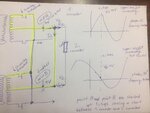rxpu
Member level 3

I am trying to paralel 6 LLC converters each having their own synchronous rectification.
Each converter has its own frequency control, so each have different phase and amplitude with respect to each other.
Each converter has its own closed loop voltage and current control. So a runaway of a single converter in the group is unlikely.
But I have some uncertainity:
If I have simple diode rectification a reverse current flow is not possible. But what if I use mosfet based synchron rectification and when the mosfets conduct will it allow backward current flow?
My concern: When any of the rectifier mosfets are conducting at the same time and if the phase and amplitdues are different (as they have different controllers) , can an excessive current flow between the secondary windings of the power supplies?
Any ideas?
Each converter has its own frequency control, so each have different phase and amplitude with respect to each other.
Each converter has its own closed loop voltage and current control. So a runaway of a single converter in the group is unlikely.
But I have some uncertainity:
If I have simple diode rectification a reverse current flow is not possible. But what if I use mosfet based synchron rectification and when the mosfets conduct will it allow backward current flow?
My concern: When any of the rectifier mosfets are conducting at the same time and if the phase and amplitdues are different (as they have different controllers) , can an excessive current flow between the secondary windings of the power supplies?
Any ideas?



